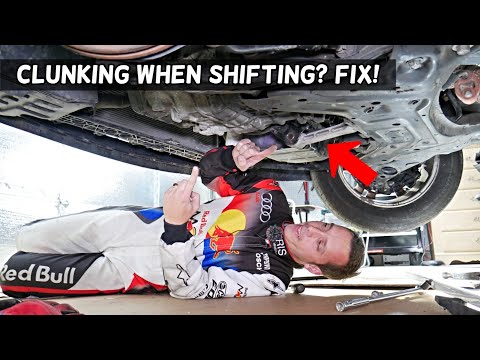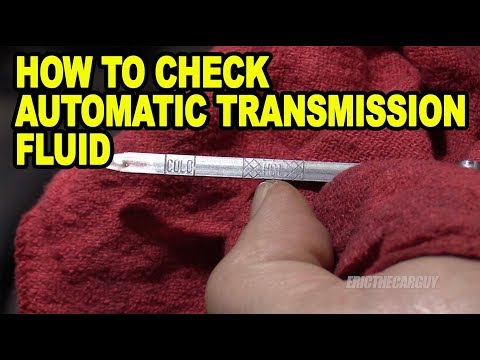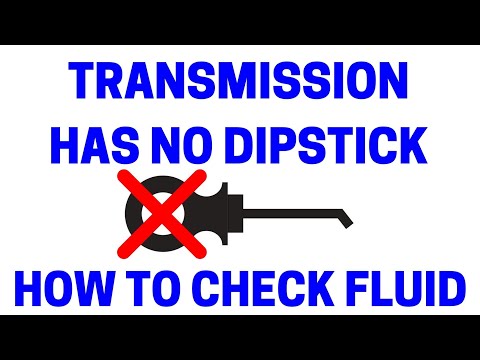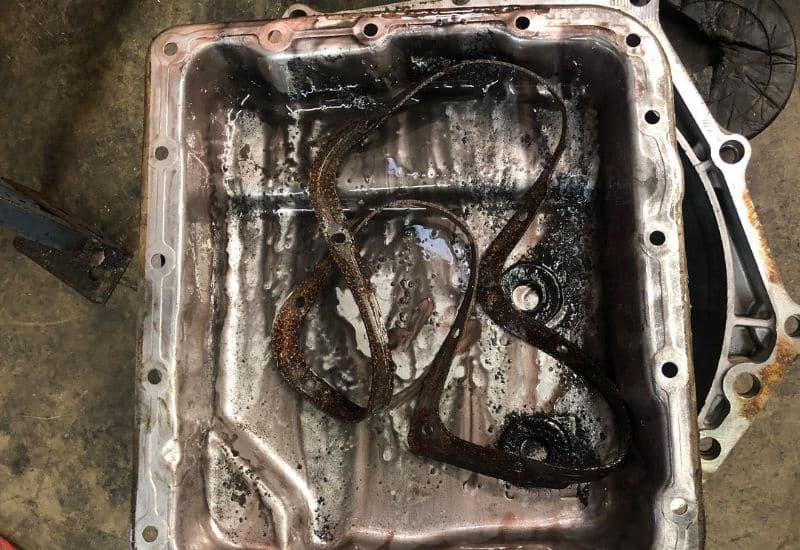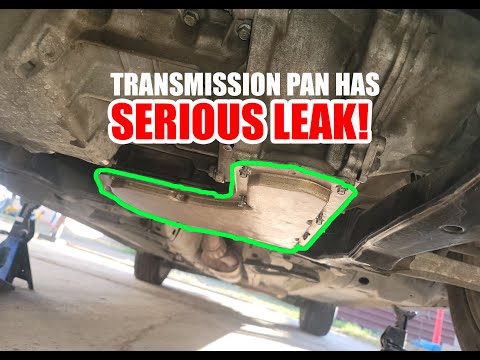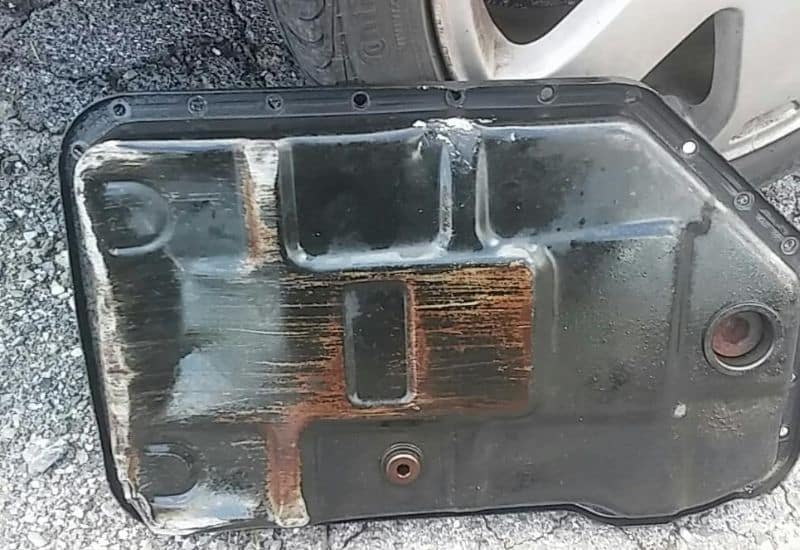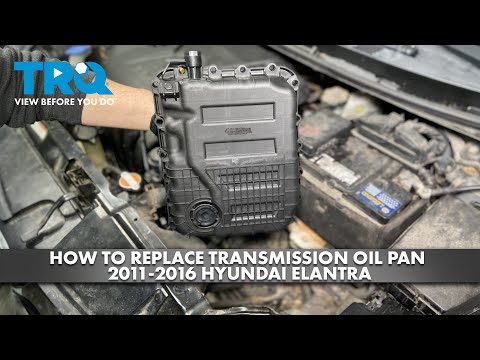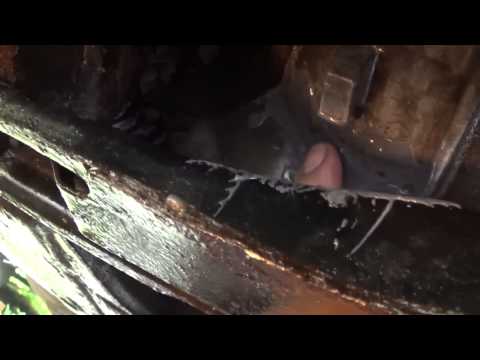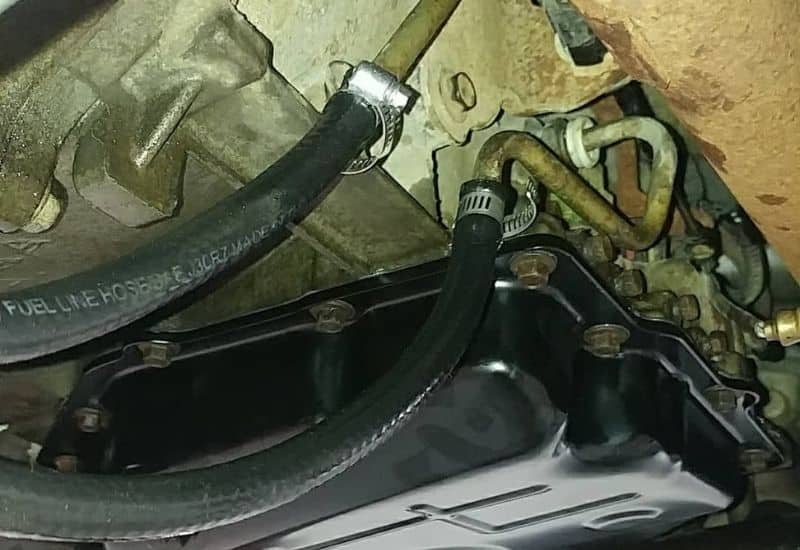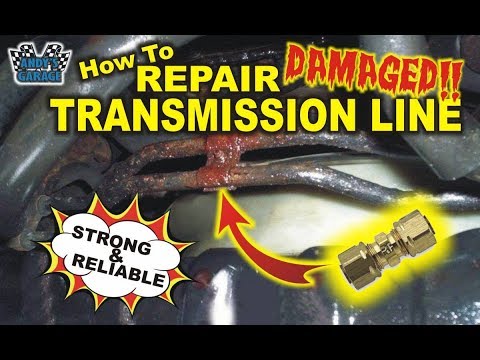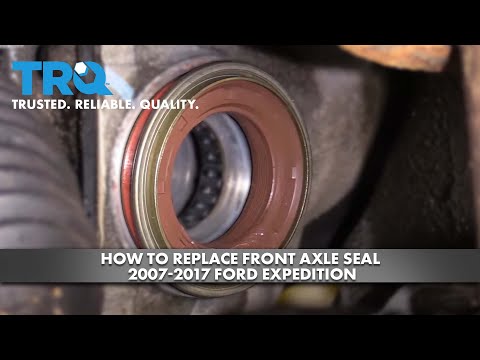
Transmission fluid or transmission oil is a special lubricant that plays a critical role in how the transmission shifts gears as well as how it dissipates heat. Anytime you have low transmission fluid, you’ll likely notice metallic grinding noises from excess friction, shifting problems, and signs of transmission overheating.
Gasket failures and cracks in the transmission oil pan are the top two most common reasons why you have low transmission fluid. Though axle seal cracks, simple fluid line leaks, and problems with the torque converter can all leave you with a desperately dry transmission.
We’re going to have to go into super sleuth mode if we want to solve the mystery of what’s causing your transmission fluid to be low and how to fix it. However, this starts with clueing in on the earliest symptoms of low transmission fluid.
8 Must Know Signs Of Low Transmission Fluid
Sometimes the signs of a minor transmission fluid leak are hard to spot. A tiny, slow leak in a gasket might only leave an occasional drip behind. Though other symptoms of a transmission fluid leak, such as getting stuck in a gear or the transmission slipping out of first gear into neutral all the time, can be much more dramatic signs of a serious problem!
1. Grinding or Whirring Noises When Accelerating
As the transmission fluid in the case goes down, the friction between the gears and other moving parts starts to go up, causing noticeable grinding noises. You’re more likely to hear these noises when accelerating or setting off on an incline when the transmission is most stressed. Though as the fluid level gets lower, you’ll likely hear the grinding noises any time the transmission is in gear, and the car is moving.
If your car’s transmission has a dipstick, you can quickly check if the fluid level is low. However, you really need to be afraid of seeing metal flakes in the fluid or fluid that looks brown instead of pink. If you notice either of these two things, then you’re likely damaging the gears!
2. Hesitation When Changing Gears

Low transmission fluid can also cause an automatic transmission to hesitate through the gear changes. This is often due to low fluid pressure in the valve body and around the shifting solenoid. The transmission takes a little longer than usual to pick up the fluid from the oil pan to build up enough pressure to shift gears.
This gear hesitation usually starts out when the automatic transmission tries to go into first, which can be really embarrassing at a set of lights. As the transmission fluid level goes down, the shifting problems will worsen and worsen higher up the tree.
3. The Transmission Gets Stuck In a Gear

If the transmission fluid is too low for the shifting solenoid to change gears, the transmission can get stubbornly stuck in one gear. A lot of times, this means getting stuck in first gear. This is even more likely to be an issue if you have degraded fluid that doesn’t properly lubricate the shifting solenoid. Though metal shavings from gear grinding can also compound the effects of low transmission fluid, causing the shifting solenoid to jam completely.
4. The Transmission Shifts Out of First into Neutral

The transmission slipping out of first gear into neutral is a sign that the transmission fluid is desperately low. In a scenario like this, the transmission struggles to draw up enough transmission fluid from the pan to shift into first. You get a little way down the road, and it surprisingly pops out of gear, whirring into neutral without sufficient pressure to keep it in gear.
A few desperate seconds pass, and you get it into first gear again. Before you have a chance to change up into a second, the transmission pops into neutral on its own again, and the cycle repeats.
5. Burning Smells

The lack of proper lubrication caused by low transmission fluid can lead to transmission overheating, which can give off an odor like melting plastic or burning wires. The smell might be limited to the lower part of the engine bay. However, you might even notice the odor of an overheating transmission coming through your vents if you have the climate controls on the fresh air setting.
6. Clunking Sounds When Shifting Low Gears
Clunking sounds when shifting gears or putting the car in low gear are often a sign of a problem with an axle seal or bad U-joints, which can cause minor transmission fluid leaks. This will be even more pronounced in a four-wheel drive truck with a locking rear differential when you put it into 4-Low. Then when you take it out into two-wheel drive again, it sounds like someone hit the underside of the transfer case with a hammer.
7. A Check Engine or Check Transmission Light
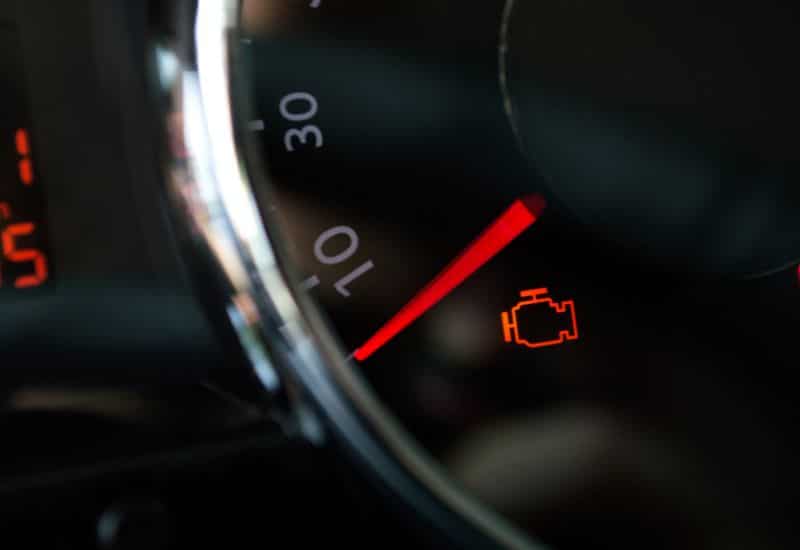
If the TCM or the ECU notices problems with transmission performance due to low transmission fluid, it will eventually turn on a warning light. Some cars have an independent “Check Transmission” light though even if yours doesn’t have one, the TCM will tell the ECU to turn on a check engine light. When the light comes on it throws and stores a code in the car’s computer.
8. The Transmission Fluid on the Dip Stick Is Low
Early signs of low transmission fluid should prompt you to check the fluid to see if it’s low on the dipstick. Though these days, more-and-more automakers are producing cars that don’t have a traditional dipstick. If you have one, then you’ll need to check the transmission fluid via the inspection and fill plugs.
How to Check Transmission Fluid by the Inspection and Fill Plugs
If you have a newer car that without a transmission fluid dipstick, then your only option for determining the level is via the inspection and fill plugs. The fill plug is where you add transmission fluid; it’s often at the top of the transmission to allow you to pour fresh transmission fluid into the case. The inspection plug is usually a bolt, low down on the side of the transmission, and will give you the best reading.
To check if you have low transmission fluid, you’ll need to make sure the car is parked on a level surface and in parking or neutral with the hand brake on. The engine should be running and idling at normal operating temperature.
At this point, the transmission fluid in the sealed transmission should be optimal. If you see signs of the fluid being low again, you know you have a leak somewhere in the system.
What Causes Low Transmission Fluid
Gasket failures and tiny cracks or punctures in the transmission oil pan are the two most common reasons for low transmission fluid. Though there are certainly other faults that could leave you with low levels. The leak has to be tangible, as transmissions are sealed systems, and there’s nothing to burn up, burn away, or be consumed.
1. Gasket Failure or Bad Pan Seals
Time, heat, and general wear-and-tear can cause the gaskets or pan seals on your transmission’s oil pan to fail, resulting in a slow leak. These leaks are generally easy to spot. They’ll leave tiny puddles in your garage or parking space. If you crawl under the car, you should be able to spot leaks on the side of the transmission oil pan.
How to Fix
The initial temptation with a leaking pan gasket is to crank down on it with all your might in hopes of pressing it back together. This quick fix might even work the first time for a few weeks or months. However, you’ll end up doing yourself more harm than good.
When you crank down on the old gasket, you deform the underlying metal slightly. Eventually, the still-degrading gasket continues to fail. You bite the bullet to replace it, and it still leaks because the metal around the pan gasket is now deformed and won’t seal completely again.
The wisest move is to have all the pan gaskets replaced, which pushes the limits of what a DIY mechanic can do.
A mechanic will charge you $175 to $350 to replace your transmission’s leaky pan gasket.
2. A Crack or Puncture in the Transmission Oil Pan
Cracks and punctures in the transmission oil pan are another very common type of transmission leak. They are usually caused by running over something on the highway, taking the car off-road, and striking a rock or big tree branch. It’s also possible for a bad rust spot on an older car to leak fluid directly from the pan.
The size of the crack or puncture will determine just how fast you lose transmission fluid. This is usually even easier to spot than bad pan gaskets, as the leak will come straight out of the pan. A bad puncture might even leave you without any transmission fluid overnight.
How to Fix
If you go online, you’ll find many DIY mechanic videos that will tell you to use JB Weld or Quicksteel epoxy to seal up the crack or puncture. There’s a chance this will work in the short term as a quick fix, but I’ve never seen one last more than three months! Once it fails, the surface is too fouled to try to repair it again.
The wisest move here is to replace it completely. This pushes the limits of what your average DIY mechanic can do.
Having a mechanic replace your transmission oil pan runs between $350 to $550.
3. A Cracked Transmission Case
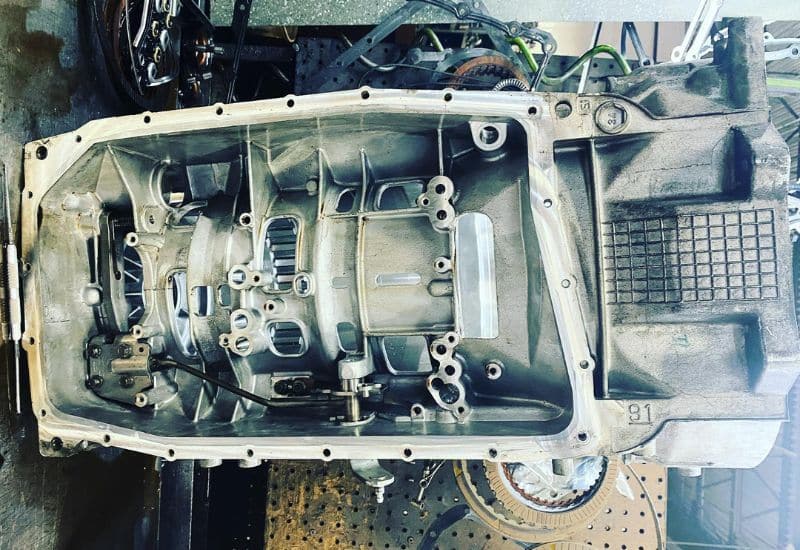
Bad U-joints, cracks in the axle seals, and other faults that put excess torsion force on the transmission can crack the transfer case. This crack can then let fluid leak out. Just how much comes out depends on the size of the crack. You’ll usually see it toward the rear of the transmission.
If you see a crack in the housing, you must stop driving it immediately. The more torsion stress you put on the housing, the more likely the crack will spread until the entire housing fails.
How to Fix
Here again, you’ll likely find people on the internet who swear that you can fix a cracked housing with JB Weld or some other type of putty. While this will stop the leak, it won’t be as strong as the original metal. Then the bad U-joints or whatever causes the crack will rip through it like a steak knife through tinfoil.
So, you first have to fix whatever caused the crack in the housing. From there, the most solid repair option is to have a transmission specialist TIG weld the crack. This will cost you anywhere from $220 to $500, depending on the type of metal your transmission housing is made from and how severe the crack is.
4. Cracked or Punctured Transmission Fluid Lines
A crack or puncture in one of the transmission fluid lines leading to the radiator is also one of the more common reasons for low transmission fluid. These lines carry hot transmission fluid to the radiator to be cooled and then returned to the transmission housing. If a rock or road debris makes contact with either of these lines, fluid can leak out.
This is often a double-whammy as the fluid level goes down; it does a worse-and-worse job of cooling the transmission. Then friction builds up between the gears causing the remaining fluid to overheat and lose some of its lubricating properties.
Even if you can’t immediately spot the leak in the lines, you’ll still be able to see the drops of fluid under the car. Sometimes the small crack will let transmission fluid run along the damaged line dripping off just before reaching the radiator.
How to Fix
Repairing or replacing a damaged transmission line is the sort of thing a reasonably capable DIY mechanic can do. Though the quality of the hose you use matters. You might be able to patch it, but this is usually a short-term fix. Replacing the bad section with a steel hose and compression fittings is better.
If you feel like repairing your transmission lines is beyond your depth, there’s no shame in taking it to a transmission specialist.
Usually, a mechanic can replace your damaged transmission lines for $125 to $200.
There’s very little parts cost, so if you have a slightly older vehicle, the wise move is to have the mechanic replace both lines simultaneously.
5. A Bad Torque Converter

A crack in the torque converter’s body can create a serious leak allowing transmission fluid to leak out. This usually starts out as a fault with the torque converter’s needle bearings. When this happens, the car will increasingly have difficulty shifting gears. This is due to both low transmission fluid and the torque converter acts like a pump helping to move transmission fluid throughout the system.
When a torque converter house is damaged, you might get intermittent spraying of transmission fluid out of the crack. You’ll likely also get a check engine or a check transmission light, as the TCM and the Valve Body won’t have the accurate fluid pressure they need to make the transmission respond to the engine’s power.
If it’s a bad torque converter seal, and the torque converter itself is fine, you’ll see a lot of transmission fluid in the bell housing. This is probably your “Best Case Scenario.”
How to Fix
A torque converter is technically a self-contained unit. If the transmission fluid leak is just due to a bad torque converter, a cracked housing, or a bad torque converter gasket, you won’t have to shoulder the massive labor costs of opening the transmission housing. These repairs are usually beyond what a DIY mechanic can handle.
The cost of a mechanic replacing a bad torque converter seal can range from $450 to $600.
The cost of a mechanic replacing a torque converter ranges from $600 to $1,000.
6. A Crack in the Axle Seals
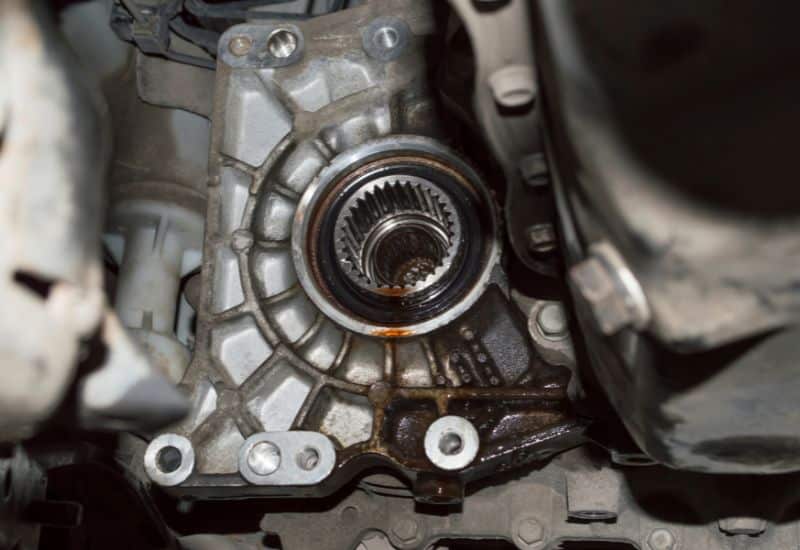
If an axle seal is cracked with age or damaged by contact with road debris, transmission fluid can escape from the transfer case. This can be a little hard to spot at first, as the fluid leak is the most pronounced when you’re driving. Then when you get home, the drips stop, and you might not even have any transmission fluid spots on the pavement.
If you’ve looked everywhere else for the source of an axle seal leak and you’re still left scratching your head, you should turn your attention to the axle seals. If you feel carefully around the seal, you might find a wet spot where the fluid leaks out while driving.
Also, check the back side of the tires. Sometimes a small crack in the axle seal will let a tiny amount of fluid out, which then runs down the exterior of the seal until it meets the tire. In such a case, the back of the tire will have a glistening red smear of transmission fluid and road grime. You might also notice smoke coming from your brakes if the transmission fluid makes it from the tire’s outside to the rotor’s interior surface.
How to Fix
If you’re a fairly capable DIY mechanic, to the point where you’re capable of handling a complete brake job, then you might be able to replace your bad axle seals yourself.
Though there’s a lot of labor involved in this, you risk messing something up with your brakes if you get it wrong. So many people will have a mechanic replace their bad axle seals.
The average cost for an axle seal replacement range from $250 to $350.
Frequently Asked Questions
How Much Transmission Fluid Does a Car Hold?
The average transmission will hold between 9 to 13 quarts of transmission fluid. Though larger vehicles, like heavy-duty pickup trucks and vehicles with an upgraded oil pan or transmission radiator, might hold more.
What Kind of Transmission Fluid Should I Add If Mine Is Low?
Automatic and manual transmissions use slightly different transmission fluids. Assuming your car has an automatic transmission, you want to look for ATF fluid. Though there are different types of ATF, you’ll need to use the one that’s recommended in the owner’s manual.
Conclusion
Symptoms of low transmission fluid from a minor leak in an axle seal or a transmission cooling line might start out subtle. Hesitating when changing gears, the engine revving when you step on the brake, or occasionally slipping out of gear might be easy to dismiss at first. However, more major leaks, like a crack in the torque converter or a severe failure in the pan gasket, can let a lot of fluid out quickly.
As the fluid level inside the transmission continues to go down, the transmission starts shifting harder and harder. You’ll likely notice a grinding noise from the unlubricated friction between gears. The transmission might overheat from this or start slipping out of first.
Repairing a pan gasket failure is relatively straightforward. However, it’s wiser to replace the gasket immediately without giving in to the temptation to crank down on it. If you have a damaged transmission case, punctured lines, or axle seal, it’s better to go for the total replacement. Most patch jobs are short-lived and should only be seen as quick fixes.

Written By
Jason Farrell
Jason Farrell is a certified master technician, the editor of Mechanic’s Diary in Pittsburgh, Pennsylvania. He is ASE (Automotive Service Excellence) certified and earned a Bachelor’s Degree in Automotive Technology from Pittsburg State University. With nearly 18 prior years of experience in the automotive field, he has extensive knowledge about Domestic, European, and other foreign makes and models of cars and light trucks. Jason’s experience working as a technician and service manager at dealerships, gave him the experience and know-how of most aspects of inspection, diagnosis, and repair from engine and drivability to electrical, HVAC, brakes, steering and suspension and everything in between.


